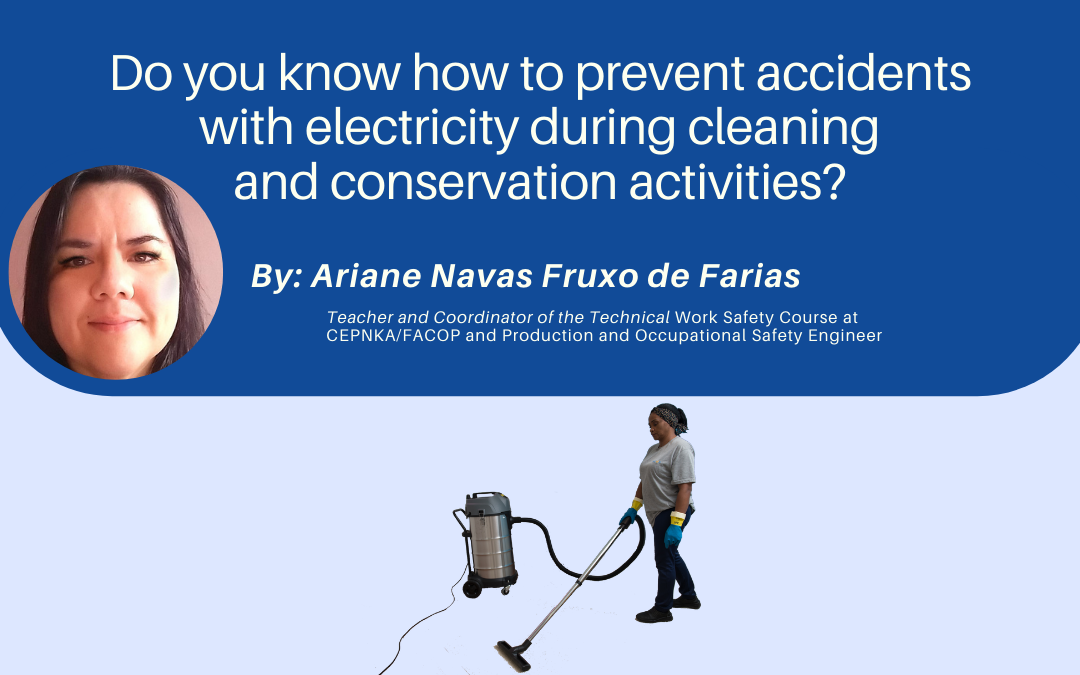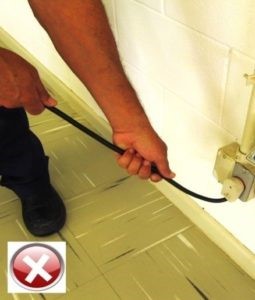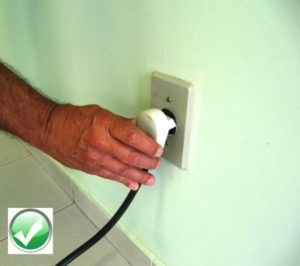No products in the cart.

Do you know how to prevent accidents with electricity during cleaning and conservation activities
When it comes to electricity, we usually only associate it to power distribution activities or with electricians. Butm the use of electricity is not restricted to these workers, it goes far beyond.
In almost all professional activities, workers may be exposed to electricity, whether to a greater or lesser extent. But, in general, contact with a device, equipment, tool, machine, connections, and other electrical materials usually happens during the workday. Because the use of these materials often happens indirectly, proper care is not always taken when handling electrical equipment or machinery, and this can lead to serious accidents.
It must be understood that the action of electricity is extremely harmful to human health, often lethal. An accident with electricity can happen as a result of a short circuit, electric shock (the passing of an electric current through the body) or electric arc or voltage (phenomenon with extreme intensity that results in discharge of electric current flow in the air). All of these electrical accidents can result in severe burns, loss of limbs (such as hands, arms and feet), cardiac arrest, respiratory failure, falling, convulsions and even death. The risk of fire still also needs to be considered.
And, what does all this have to do with cleaning and conservation activities? Simply everything.
In my professional career, I had the opportunity to work in companies from various segments: financial, productive, commercial, educational, including professional experience abroad. And, in all of them, I have always been close to the cleaning and conservation professionals and this made me realize that the use of machines and equipment by most workers in this sector is intense.
Today, the cleaning professional, for example, uses more than just cloths, buckets, brooms as they did years ago. Quite the contrary, both the professional and the activity were modernized, with companies investing in new work processes and, mainly, in technology.
The cleaning and conservation sector is gradually intensifying the use of robust floor treatment machinery. Non-electrical equipment is being replaced by floor scrubbers, washers and sweepers or industrial floor polishers, which makes the process more productive and standardized, however, it increases worker exposure to the dangers of electricity.
Some very common procedures to observe are the use of extensions, “T” outlets, with multiple machines connected to the same one, working with equipment with unprotected cables or electrical connections, and seeing that industry professionals of distinct sectors, including those for cleaning and maintenance, have free access to corporate electrical cabinets.
These practices are very common, but extremely dangerous. Here is a list some examples:
| DANGEROUS PRACTICES IN THE USE OF ELECTRICAL EQUIPMENT | ||
| Action | Danger | Risk |
| Connecting multiple machines to the same outlet or Ts | Power grid overload, generating short circuits | Electric shock, damage to equipment/machine, death, fire |
| Leave the extension plug in a wet area, especially on the floor when cleaning | Can generate short circuit | Electric shock, burn, death, fire |
| Handling machines and equipment with unprotected cables and electrical parts | Can generate short circuit | Electric shock, burn, death, fire |
| Handling electrical cabinet without proper training and authorization | Can generate short circuit/voltaic arc | Electric shock, burn, death, fire |
Table 1 – Examples of hazardous practices related to electricity
And what to do to prevent accident? First, it is necessary to follow safety measures. When it comes to caution with electricity, it is recommended to follow the requirements of Regulatory Standard 10 (NR 10) which provides safety parameters, preventive measures, prohibitions, personal and collective protective equipment, training and other requirements that minimize the risks when working with electricity. . Some of our guidelines are:
- Performing a safety checklist of machines and equipment, especially if the wire is in perfect working condition, it must not be stripped;
- Site risk analysis (check that there is no nearby power grid that could cause an accident);
- Wearing PPE (Personal Protective Equipment) and CPE (Collective Protection Equipment);
- Always switch off the appliance when cleaning, storing, plugging in or unplugging it;
- Do not leave plugs on wet floors while performing the activity (water is an excellent electrical conductor, which may cause a short circuit or electric shock to the worker);
- Do not run over the power cord with operating equipment, as the cord may break and cause a short circuit and shock;
- Unplug by pulling it by the plug and never by the cord;


- Do not pull or carry the devices by the cord;
- Do not use common extensions to connect high energy consuming appliances. Use industrial cables with the adequate capacity;
- When charging a device, be careful not to touch live areas;
- Do not touch the electrical part of appliances with metal objects;
- Do not run wires under furniture as this may cause fire;
- Keep any appliance away from humid places. Even when turned off, appliances can cause shocks;
- Do not tamper with electrical switchboards, not even to turn lights on/off. Access to electrical cabinets should only be done by authorized professionals;
- In case of an accident, do not touch the victim, turn off the power source immediately and call for medical help.
The danger of working with electricity will always exist, but following the guidelines provided by the company and training correctly will make you work safer and easier.

